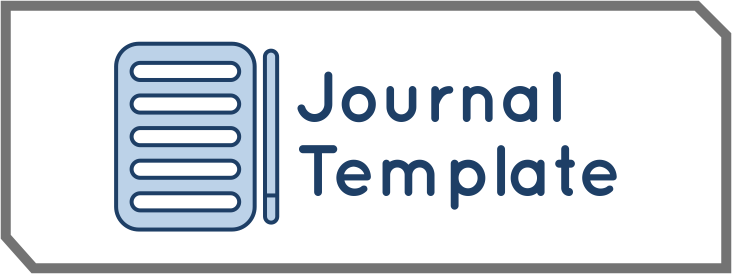Leverage Ratio, Capital Intensity, and Inventory Turnover: Their Influence on the Effective Tax Rate of Textile and Garment Manufacturing Companies (2017–2023)
DOI:
https://doi.org/10.55606/ijemr.v4i3.552Keywords:
capital intensity, effective tax rate, inventory turnover, leverageAbstract
This study aims to evaluate the impact of debt ratios, capital intensity, and inventory turnover on effective tax rates (ETR) in manufacturing companies in the textile and garment sectors listed on the Indonesia Stock Exchange (IDX) during the 2017–2023 period. The background of this research stems from the urgency of fiscal efficiency to enhance the competitiveness of Indonesia's textile industry, which faces significant challenges from global economic pressures, fluctuating export demands, and increasing production costs. These external factors have pushed companies to seek strategic ways to manage their tax burden without violating prevailing regulations. The research adopts a quantitative approach, employing the Common Effect Model (CEM) in panel data regression, with data derived from 112 firm-year observations across 16 companies selected based on specific criteria. This approach is chosen for its effectiveness in analyzing the influence of multiple variables over time while controlling for company-specific characteristics. The empirical findings reveal that leverage, or debt ratio, does not significantly affect the ETR, suggesting that the use of debt as a tax shield is not effectively utilized or is neutralized by other factors such as regulatory constraints or conservative financial policies. In contrast, capital intensity—measured by the proportion of fixed assets—has a significant negative impact on ETR. This indicates that companies with higher investments in fixed assets can reduce their taxable income through depreciation expenses, making capital intensity a valuable tax planning tool. Meanwhile, inventory turnover shows a significant positive relationship with ETR. Although high inventory turnover generally indicates operational efficiency and strong sales performance, it may also lead to higher taxable income, thus increasing the overall tax burden. This paradox underlines the complexity of aligning operational efficiency with fiscal efficiency in practice.
References
Apridila, I., Asmeri, R., & Putri, S. Y. A. (2021). The effect of leverage, sales growth, and capital intensity on tax avoidance (In food and beverage sector manufacturing companies listed on the IDX for the period 2015-2018). Journal of Psychology, 3(4), 823-842.
Darsani, P. A., & Sukartha, I. M. (2021). The effect of institutional ownership, profitability, leverage and capital intensity ratio on tax avoidance. American Journal of Humanities and Social Sciences Research (AJHSSR), 5(1), 13-22.
Dewi, I. P. (2018). The influence of capital intensity, leverage, and company size on tax planning in agricultural and mining sector companies listed on the IDX for the 2010-2015 period. Journal of Accounting AKUNESA, 7(1).
Feni, M. (2024). Literature review of fixed asset intensity on tax aggressiveness. Journal of International Accounting, Taxation and Information Systems, 1(3), 191-200. https://doi.org/10.70865/jiatis.v1i3.63
Firmansyah, A., Legowo, W. W., & Yuliana, S. F. (2021). Tax aggressiveness in trading companies in Indonesia: Profitability, capital intensity, leverage, and company size. Journal of Developmental Accounting, 8(1), 84-108. https://doi.org/10.52859/jba.v8i1.137
Gita, I. A. M. A., Partika, I. D. M., & Suciwati, D. P. (2021). Effect of firm size, profitability and inventory intensity on effective tax rate (ETR). Journal of Applied Sciences in Accounting, Finance, and Tax, 4(1), 9-15. https://doi.org/10.31940/jasafint.v4i1.2410
Mariana, C., Subing, H. J. T., & Mulyati, Y. (2021). Does capital intensity and profitability affect tax aggressiveness? Turkish Journal of Computer and Mathematics Education, 12(8), 1050-1056.
Mariani, N. A. (2024). Analysis of the influence of capital intensity, inventory turnover (ITO) and return on assets (ROA) on the effective tax rate (ETR) with institutional ownership as a moderating variable. Jurnal Indonesia Sosial Teknologi, 5(10). https://doi.org/10.59141/jist.v5i10.1220
Mulya, A. A., & Anggraeni, D. (2022). Company size, capital intensity, asset funding and profitability as determinants of tax aggressiveness factors. Owner: Research and Journal of Accounting, 6(4), 4263-4271. https://doi.org/10.33395/owner.v6i4.1152
Panda, A. K., & Nanda, S. (2020). Receptiveness of effective tax rate to firm characteristics: An empirical analysis on Indian listed firms. Journal of Asia Business Studies, 15(1), 198-214. https://doi.org/10.1108/JABS-01-2019-0018. https://doi.org/10.1108/JABS-11-2018-0304
Prabowo, A., & Sahlan, R. (2021). The effect of profitability, leverage, and capital intensity on tax avoidance with company size as a moderating variable (Empirical study on manufacturing companies listed on the IDX in 2015-2019). Media Accounting Tax, 6(2), 55-74. https://doi.org/10.52447/map.v6i2.5126
Putra, D. M., & Kirana, A. P. (2023). Impact of leverage, capital intensity, inventory intensity, cash effective tax rate on tax avoidance: Assessment for energy sector corporate. Atestasi: Jurnal Ilmiah Akuntansi, 6(2), 419-433. https://doi.org/10.57178/atestasi.v6i2.4
Safitri, K. A., & Muid, D. (2020). The effect of corporate social responsibility disclosure, profitability, leverage, capital intensity and company size on tax avoidance (Empirical study on manufacturing companies listed on the Indonesia Stock Exchange for the 2016-2018 period). Diponegoro Journal of Accounting, 9(4).
Saputri, C. D. (2024). The effect of return on assets, debt to equity ratio and capital intensity ratio on tax avoidance. JEMSI (Journal of Economics, Management, and Accounting), 10(4), 2684-2693. https://doi.org/10.35870/jemsi.v10i4.2888
Sopiani, W. N., & Syarif, D. (2024). The effect of inventory intensity, debt to equity ratio, company size, and return on assets on the effective tax rate in manufacturing companies in the agricultural sector listed on the Indonesia Stock Exchange for the 2016-2023 period. JEMSI (Journal of Economics, Management, and Accounting), 10(4), 2721-2731. https://doi.org/10.35870/jemsi.v10i4.2897
Downloads
Published
How to Cite
Issue
Section
License
Copyright (c) 2025 International Journal of Economics and Management Research

This work is licensed under a Creative Commons Attribution-ShareAlike 4.0 International License.







